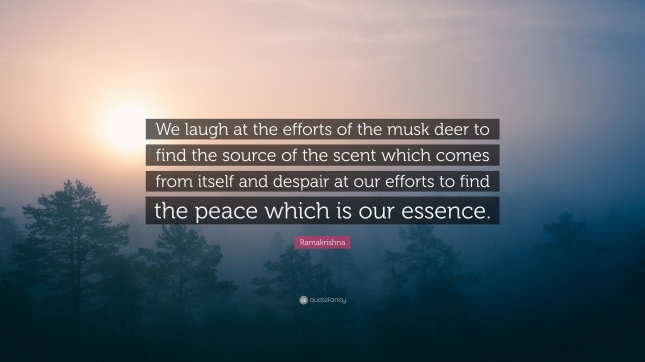Repression and expression
Our equanimity is ruined when unconscious emotions like – anger, fear hatred, jealousy, greed, lust, cowardice, etc. – take control over us. Most often these emotions take control over us for no rational reason and with a strength that is out of proportion to the situation that provoked it.
The only way we know to deal with these unwanted emotion is by repression or expression, but by repression these emotions don’t go away. On the contrary it is driven deeper into the unconscious and accumulates as poison. At any moment it can explode and then it is uncontrollable.
The other alternative is – expression. This means to dump these emotions on to someone or something else. It is even more dangerous as it perpetuates a destructive vicious cycle that can destroy relationships and the self.
The third Alternative – Acceptance
The third way is to understand the unconscious nature of functioning and use their energies for creative purposes. It is possible to transform the negative energies into the opposite positive values by the alchemy of mindfulness. Fear can be turned to love, anger can become compassion and hatred can be transformed to friendliness. The vital key is acceptance. There is no condemnation or rejection of whatever emotion arises. Neither is there any interpretation of whether it is good or bad. There only acceptance of what is appearing in the moment.
The key to transformation
Transformation does not occur by expression or repression but through mindfulness and acceptance. Mindfulness transforms because knowingly you cannot be angry. Just as knowingly you cannot put your hand into a flame. Once you are conscious about anger and what it does to you you cannot be angry. Its power was in being unconscious.
This is not as easy as it sounds. Mindful meditation gives us the possibility to watch the workings of the unconscious. It gives us the possibility to access the dimension of ourselves which is beyond the mind. It enables us to accept that which is appearing without judgement. When the light of awareness is shed on all the ways of the mind you will find that it no longer controls you. The moment mindfulness is present the fight stops and relaxation happens.









 There’s a Buddhist saying that peace is like a sun that’s always shining in your heart. The most basic fact about human nature is that peace is our own fundamental and true essence. It is not something we gain by doing/not doing certain things or by following certain disciplines and techniques. The reality is that this fundamental nature cannot be conceived or perceived by the mind. The mind can only know a form, a shape, a color or an image. It can thrive only in the world of phenomena.
There’s a Buddhist saying that peace is like a sun that’s always shining in your heart. The most basic fact about human nature is that peace is our own fundamental and true essence. It is not something we gain by doing/not doing certain things or by following certain disciplines and techniques. The reality is that this fundamental nature cannot be conceived or perceived by the mind. The mind can only know a form, a shape, a color or an image. It can thrive only in the world of phenomena.